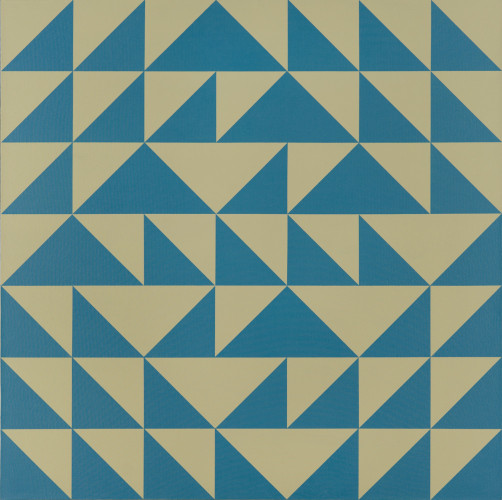Abstract Arrangements
11 October 2025 - 10 May 2026
This exhibition explores shifting approaches to abstraction in Aotearoa New Zealand in the mid to late twentieth century, through works in the Dunedin Public Art Gallery collection. Considering composition, colour, form and line, Abstract Arrangements traces the collapsing of representational form into hard-edged geometric abstraction. The exhibition sets up a dialogue between artists whose work distorts or alters identifiable experiences and subjects and those who explore the potential of colour, shape, and mark-making in non-objective compositions.
John Weeks, Gordon Walters, Bill Culbert and Louise Henderson present abstracted representations of their own experiences and surroundings. John Weeks’s Moroccan
Theme reflects his engagement with Cubist principles and fifteen months spent travelling and sketching in Morocco in the late 1920s, while Tug, Barges, Thames by Bill Culbert depicts an abstracted view of the boats and river that captured his attention during his time in London in the early 1960s. Plants, bush, and native forest found across Tāmaki Makaurau Auckland, including Epsom, Muriwai Beach and the Waitakere ranges, were prevalent motifs in Louise Henderson’s work in the 1970s. Salt Bush juxtaposes representational and abstract elements, with a thorned plant consuming the centre of the composition. Often reflecting his own relationship with the landscape in Aotearoa, Colin McCahon’s Pohutukawa Tree, High Tide was painted when the artist was living in Titirangi in Tāmaki Makaurau in the 1950s. Interested in the boundaries between representational and abstract form, McCahon’s work presents an alternative way of viewing the landscape shaped by geometric blocks of colour.
The works by Gordon Walters in this exhibition, from the 1940s and the 1960s, reflect the changing trajectory of the artist’s practice over time. While his works of the late 1940s were exploring the intersections between abstract form and surrealism, his works from the 1960s reflect the exploration of formal principles – repetition, positive and negative space, and linear and curved forms – that would come to define his career. An interest in these principles unite the work of a number of other artists, for example Mervyn Williams and Don Peebles, where geometric configurations, repeated motifs and pattern, and a quest for order and balance drive composition and form.
